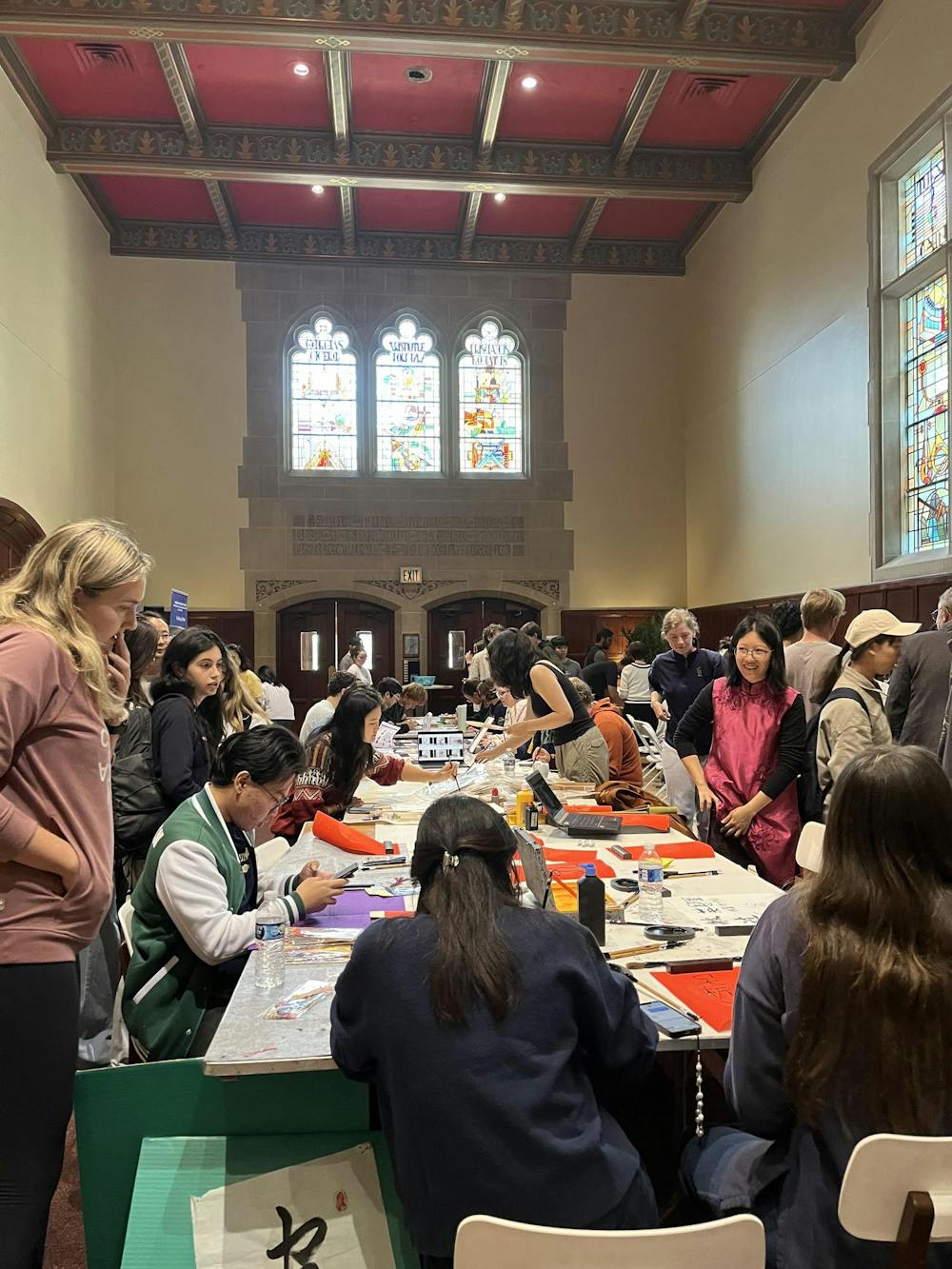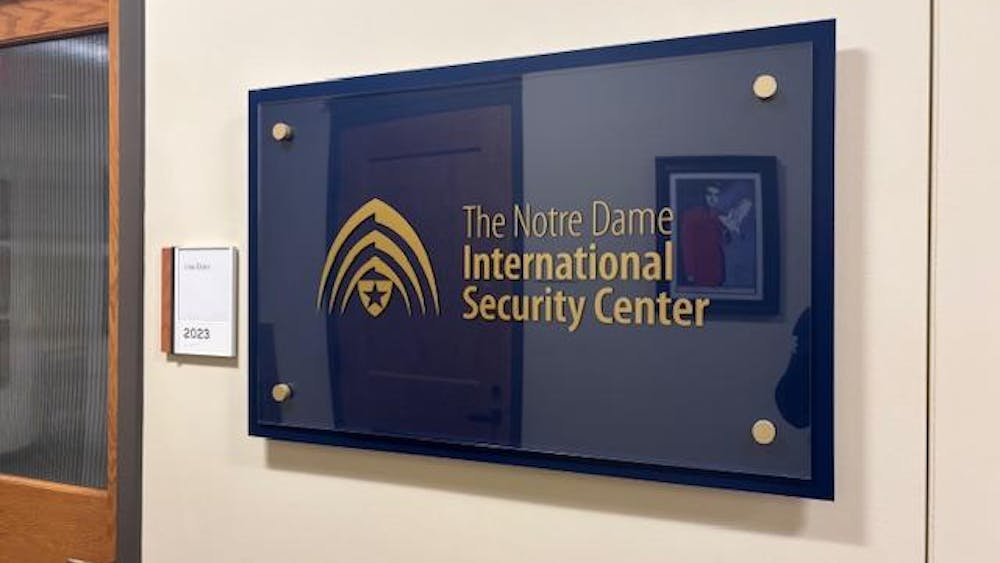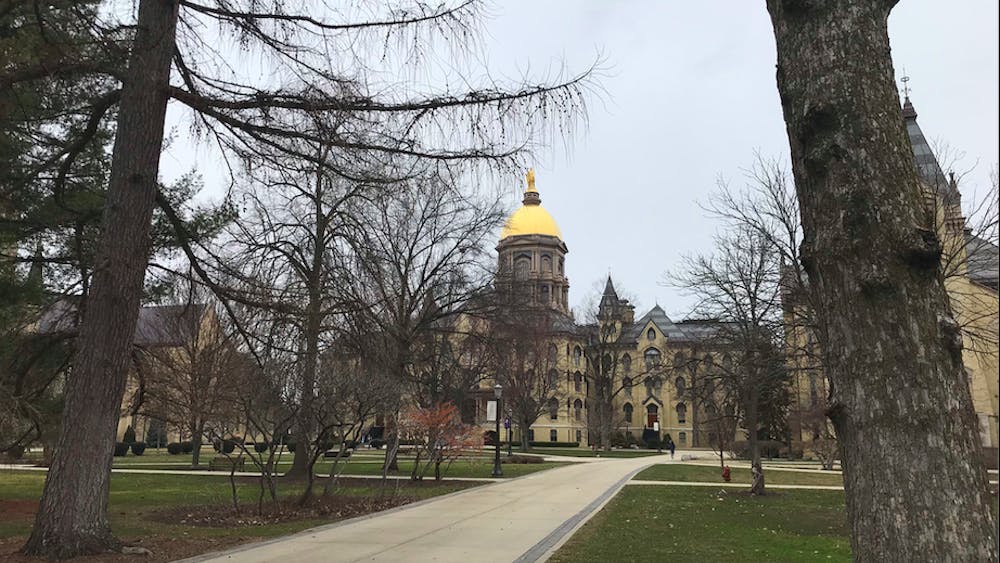O’Shaughnessy’s Great Hall served as a melting pot of different East Asian cultures on Sunday, Oct. 13.
The event featured games and traditional arts spread throughout different stations, including a Janggu display, calligraphy, painting, origami making, Korean Hanbok dressing and more. The event also served foods from varying East Asian cultures, giving students a better taste of the region’s rich traditions.
“East Asian Culture Day is celebrated annually, providing a great opportunity for language-learning students to mingle and interact through various activities from different language programs, including Chinese, Japanese and Korean,” Xian Wang, director of undergraduate studies and assistant professor of East Asian Languages and Cultures, said. “Since students learning one language do not often get the chance to interact with the culture of their own language or other cultures, this event offers them the chance to experience that and step out of their comfort zone, while also making new friends.”
Lilly Polster, a first-year student in the Korean language program, helped students try on a Hanbok.
“A Hanbok is a traditional Korean garment usually worn for celebrations. People also receive one after a wedding. It is a significant part of Korean culture, especially in the past,” she explained. She further described it as “a flattering piece of clothing that comes in bright colors, which makes everyone love them and feel like they’ve stepped back in time when they wear it.”
Anna Rohrer, a second-year Chinese student, enjoyed the artistic and literary aspects of calligraphy.
“It combines both art and language, which is a cool tradition. I get to write actual Chinese characters on my bookmark, which I will also get as a souvenir at the end,” she said.
Two important pieces of traditional Korean music were also displayed at the Korean station: the Gayageum, an instrument with 12 strings, and the Janggu, a drum.
“These instruments give students a taste of Korean music,” Yeonhee Yoon, teaching professor of East Asian Languages and Cultures and Korean language program coordinator, said. “Both of these traditional instruments, along with others, are played for different celebrations by the Korean Club here on campus, such as at the Asian Allure event.”
The Japanese station featured Samurai hat origami making, which was led by assistant teaching professor in Japanese Yoko Kawamura.
“The Samurai hat, or ‘Kabuto’ in Japanese, is made of light material, like a newspaper, and can be worn by children. This tradition is part of a celebration wishing young boys to grow up strong and healthy,” Kawamura said.
Traditions from Tanabata, a Japanese celebration on July 7, were also showcased. In this tradition, Japanese people write their wishes on tanzaku paper and hang them on a tree with the hope their wishes will come true.
Mahjong, a traditional Chinese game, was among the many Chinese cultural activities at the event. With simplified rules, the event’s version of the game allowed students to mentally challenge themselves while playing.
“The game helps keep people sharp as it involves calculations and strategy, which is why it is popular among families during holiday seasons in China,” Weibing Ye, associate teaching professor for the Chinese language at the Department of East Asian Languages and Cultures, said.










